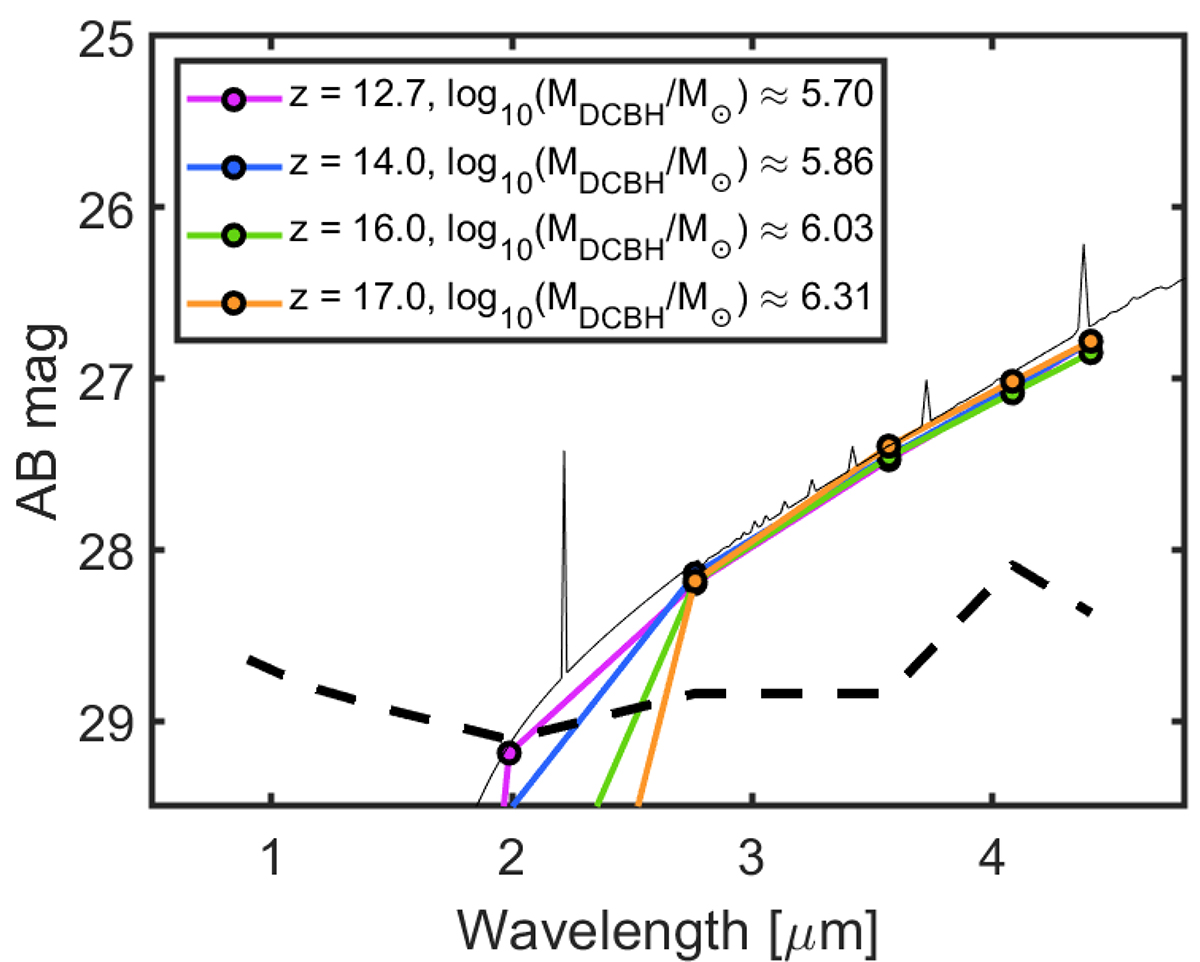Fig. 2.

Download original image
Mass-redshift degeneracy for DCHB SEDs without a clear-cut Lyα break. If the Lyα break is close to or below the detection threshold (dashed black line), acceptable SED fits to NIRCam data at longer wavelengths can be achieved for DCBH models over a wide range of redshifts. Here, the purple line corresponds to the photometric SED of a z = 12.7 DCBH with mass log10(MDCBH/M⊙) = 5.70, and the thin solid line is the corresponding spectrum (offset by 0.1 mag for clarity). In this case, the Lyα break occurs at ≈1.7 μm between the F150W and F200W filters. While the F200W flux is largely unaffected by the Lyα break, the red slope of the DCBH SED still places the F200W flux below the detection limit of the NEP field. Since a sharp drop in flux at the Lyα limit becomes unobservable in this case, the redshift becomes poorly constrained as higher-mass DCBH models at z = 14 (blue line), z = 16 (green line), and z = 17 (orange line) produce very similar fluxes in the longer-wavelength NIRCam filters (F277W, F356W, F410M, and F444W).
Current usage metrics show cumulative count of Article Views (full-text article views including HTML views, PDF and ePub downloads, according to the available data) and Abstracts Views on Vision4Press platform.
Data correspond to usage on the plateform after 2015. The current usage metrics is available 48-96 hours after online publication and is updated daily on week days.
Initial download of the metrics may take a while.


